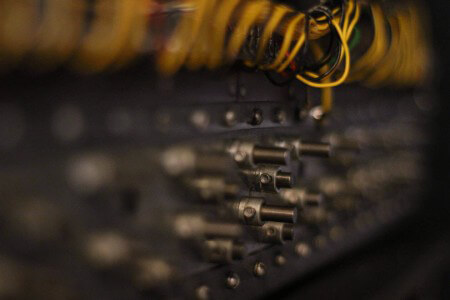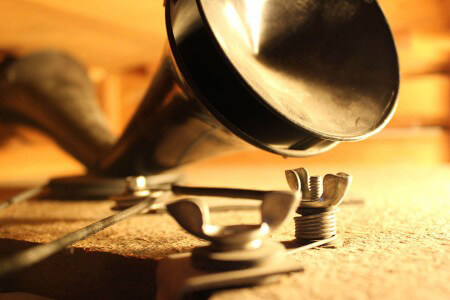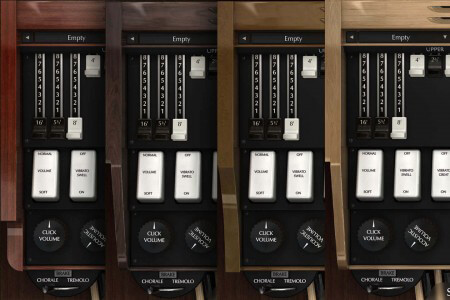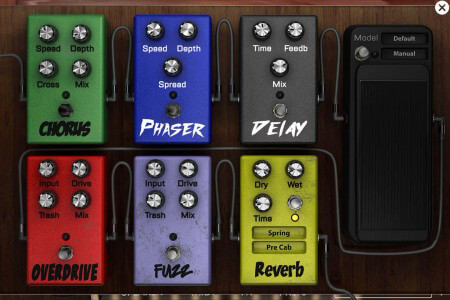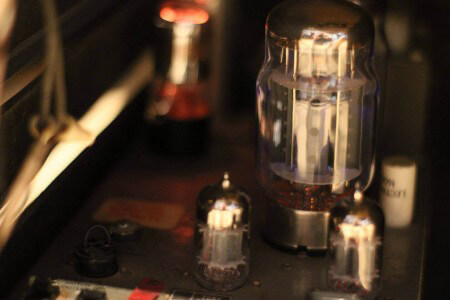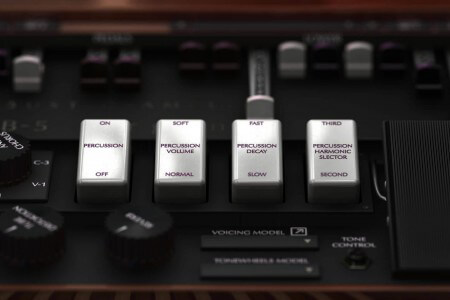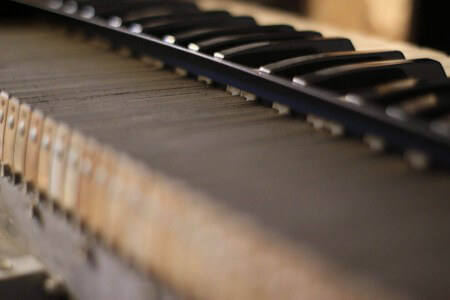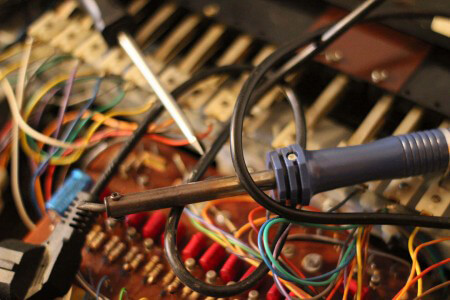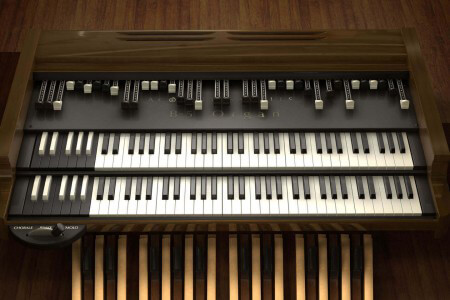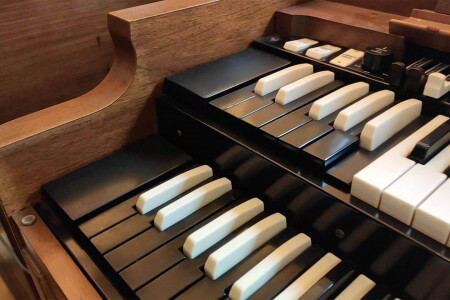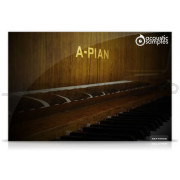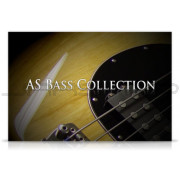Based on real tonewheel samples and fully modeled: from the tonewheel pickups and the AO-28 amp to the resistive wires, to the drawbars and key contacts... Everything has been carefully measured on different models and adjusted to match real organs.
The true sound of an organ with the flexibility of synthesis.
A Hybrid Approach
Hammond organs are complex beasts, full of wires and mechanical parts. Until now, the best renditions (short of a real organ) were made using pure synthesis, mainly because the organ works using a set of 91 frequencies that are connected via contactors under each key and whose volume is controlled by the drawbars. Sample based libraries consist of stacking drawbar samples at the same time. This works, but causes a major problem: sometimes you play the same frequency twice and because of phase cancellation, you never get the same sound twice when you press the same keys. We have found a way using the 91 frequencies synthesis approach, but with real samples, which allows you to enjoy the best of both worlds: a real recorded organ tone plus the real mechanical behavior but with the added benefits of functioning drawbar controls and synthesis tweakability.
The B-5 Organ V3 interface
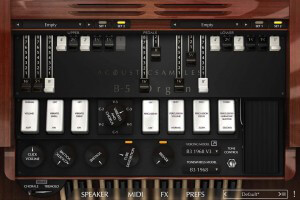
Drawbar, percussion and FX settings
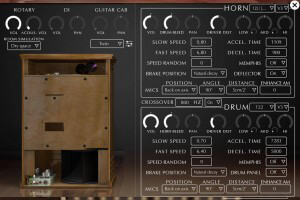
Leslie settings
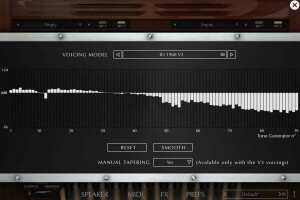
Voicing adjustments and model choice
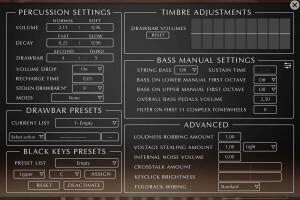
Advanced Settings and Mods
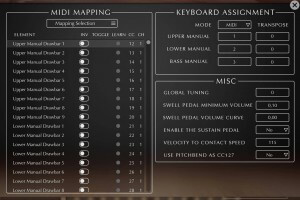
MIDI settings and Mapping
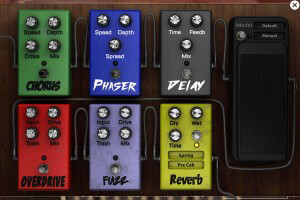
FX panel

Sample based synthesis
There are things in the Organ sound that can't be faked: tonewheels, keyclicks, vibrato scanner... so we sampled them.
We then meticulously reproduced the whole signal chain: tonewheel pickups, resistance wires, AO-28 frequency response, drawbars, swell pedal, percussion circuit, as well as all of the knobs and controls available on a real organ. Even the small wiring and electrical peculiarities have been reproduced like foldback, internal noise, leakage and even more complex ones like tone control, loudness robbing, voltage stealing, etc.
Rotary Speaker Simulation
Version 3 is an entirely new Leslie simulation, much more detailed and true to the 122A recordings.
You can choose between a few different Leslie models for each rotor: a 122, a 147, a 3300 and a few other variations.
It is also completely adjustable: microphone positions, angles, distance, and volume, pan, speeds and acceleration times can be modified independantly for each rotor.
We added three new features: driver distortion, microphone bleed and room simulation and combined with our V3 model, they make for an ultra realistic Leslie sound.
Hundreds of models
All of the tonewheel organs sound different, each of them has a particular voicing, and that's mostly due to the distance between the tonewhels and pickups but also to the aging of the capacitors.
With the help of Kon Zissis, who has been servicing and measuring organs for many years, we were able to incorporate 150 unique organ voicings from many different models (A, AV, B, B2, C2, BA, BC , CV, B3, C3, A100, RT3 and a few others).
We also sampled 4 iconic models (1968 B-3, 1960 C-3, 1969 C-3 and 1965 A-100) whose different tonewheel sounds you can switch between.
The combination of tweaking of the voicings with manual tapering options allows you to shape virtually any organ model and sound possible.
FX Panel
On top of our Leslie tube saturation, we added a panel of 7 FX.
It includes chorus, phaser, delay, overdrive, fuzz, wah (which can also be an auto-wah) and reverb (spring, plate and real room variations).
These FX are pre-Leslie, except for the reverb, which can be pre or post.
Now you can truly recreate the sound of any organ or song, including progressive rock!

Tube saturation
The tube saturation on a Leslie 122 is very different from what you hear from other tube amps.
We completely redesigned it in version 3 to match real recordings even more accurately.

Advanced Percussion System
The percussion on an organ is not just an addition of samples, it is a general volume decay envelope triggered by the first note you play, which is not restarted until you release all the keys.
We recreated it so meticulously that you can hear a percussion sound when you turn it on or change from second to third! You can even customize the time, volume and frequency to make it sound like "paradise".
It is also completely tweakable: you can edit the volume for the normal and soft settings (as well as decay times), decide on which harmonic is played and even control the recharge time.
Real Key Contact Modeling
There are 9 electric contacts under each key, and each of them produces a small click, but they don't all happen at the same time. Also, the intensity and timbre of each click depends on the phase of the tonewheel signal when the circuit is closed.
Mr. Hammond hated them, but it wouldn't be a Tonewheel organ without them.
We completely recreated this for version 3. The progressive 9 contacts are now simulated with velocity, and the variation of timbre and volume is now based on the current phase of the tonegenerators.
You can also control their overall volume and timbre.

Organ Modifications
Every organ player likes to tweak their instrument, so all the modification that organists can do are available.
- Paradise button
- Percussion always on
- Percussion volume decrease
- String Bass
- Foldback removal
And many other mods... but without having to solder or unscrew the whole thing.
All Three Keyboards
On a real organ there are 3 keyboards, two of which are almost identical except for the Percussion system, plus the Bass pedals.
You can choose to use 3 different MIDI channels, one for each keyboar,d or you can use Split to have all three on one keyboard.
In version 3, we decided to extend the capabilities of the Bass pedal manual.
On a real organ, the Bass pedals drawbars are a fixed combination of 8 frequencies, but in the V3, we give you access to that mix and the first 12 tonewheels that produce complex tones can also be filtered out to be closer to a sine wave.
We also extended the range of the Bass manual to 32 notes to match the RT3 model.
If you don't have pedals on your controller, you can also remove the bass foldback for the Upper and Lower manuals to access deep bass without them.
You can also enable the stringbass mod with control over the sustain.
Presets
In the version 3, we completely reworked the preset system.
They are now global and will save everthing, but you still have access to around 200 drawbar presets that you can load, save, delete or assign to the preset keys (upper and lower), and these include the most used Jazz, Gospel and classical presets.
The preset keys (Bleck Keys to the left of the range) can also be customised and will allow you to easily change drawbar settings while playing.
MIDI assignment and controllers
Every element of the interface can be assigned to any MIDI CC and Channel easily using our assignment panel or our MIDI Learn function.
To make things even easier, we included a few mapping presets for the most common organ clone controllers, this includes, the XK and SK series, all Nord keyboards, the Crumar, the HX3, the B4D and some others.
We even included most tweaks required by some controllers like the inversion of the drawbar movement or the toggle for the leslie speed.
The volume pedal is a crucial element when playing the organ and you have the possibility to adjust the curve and range of the volume and filter affected by the pedal.







